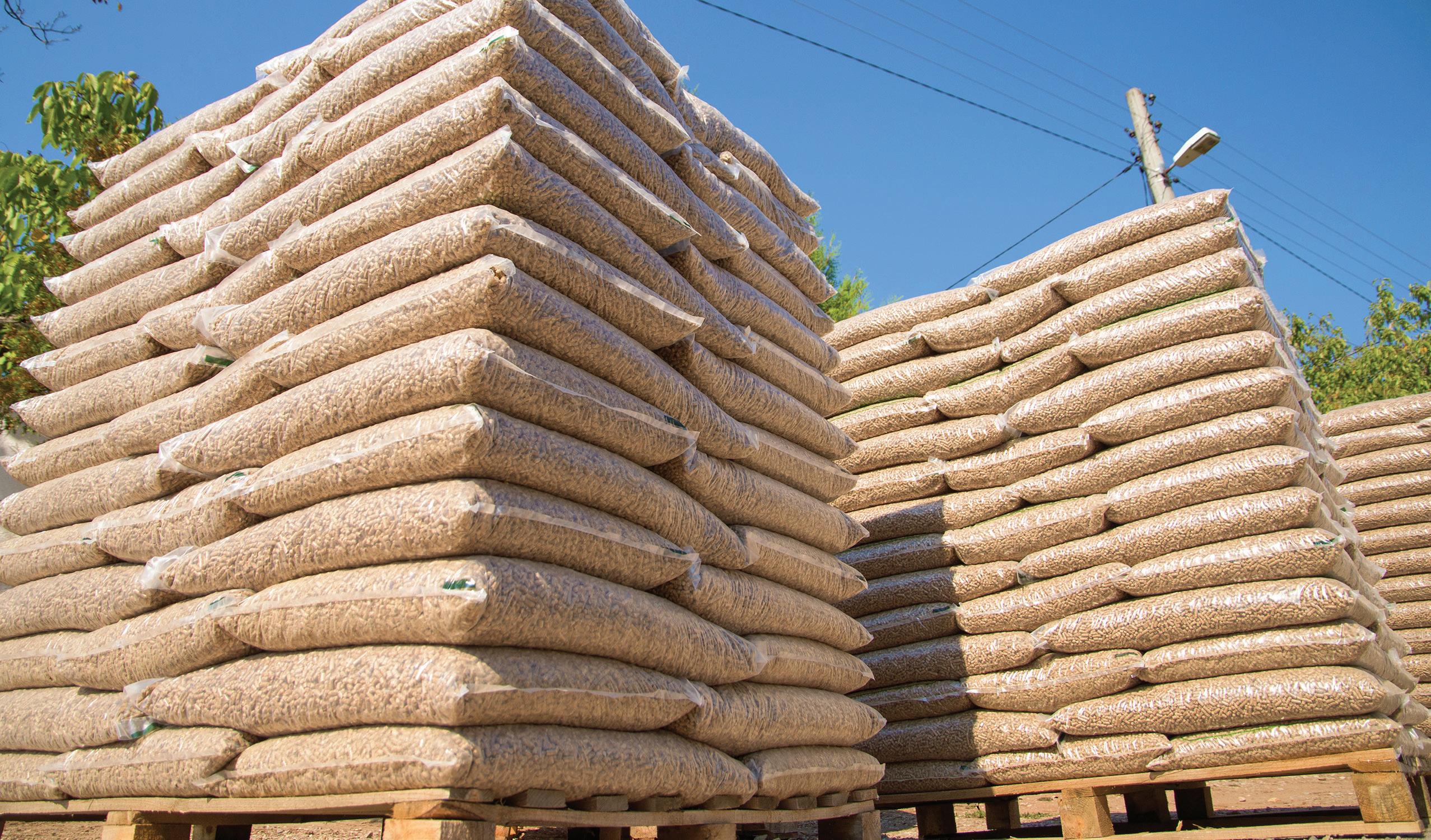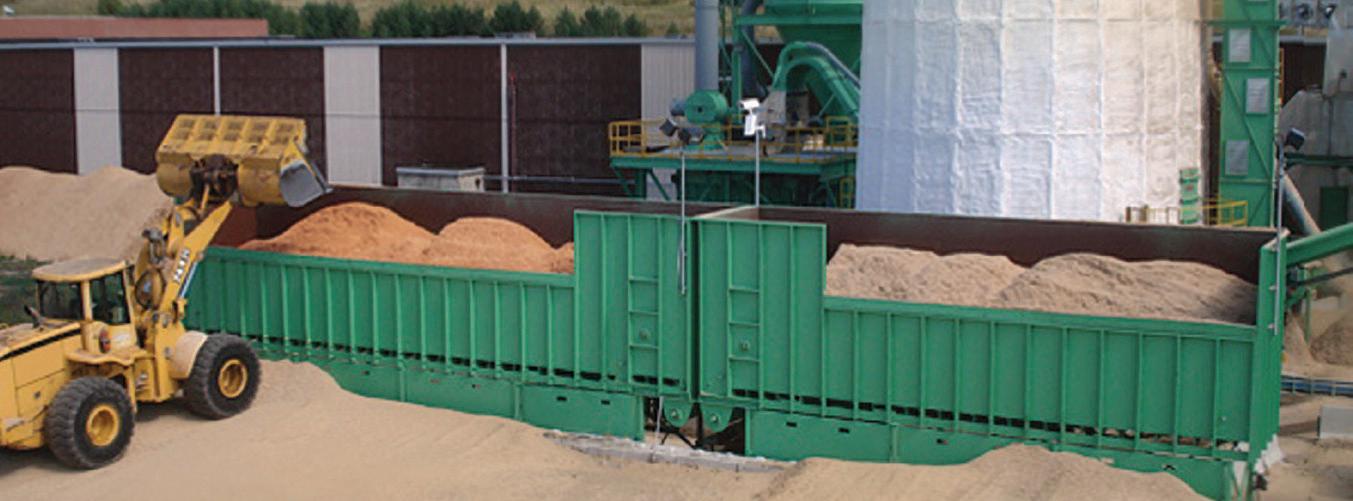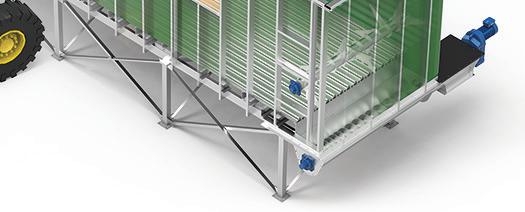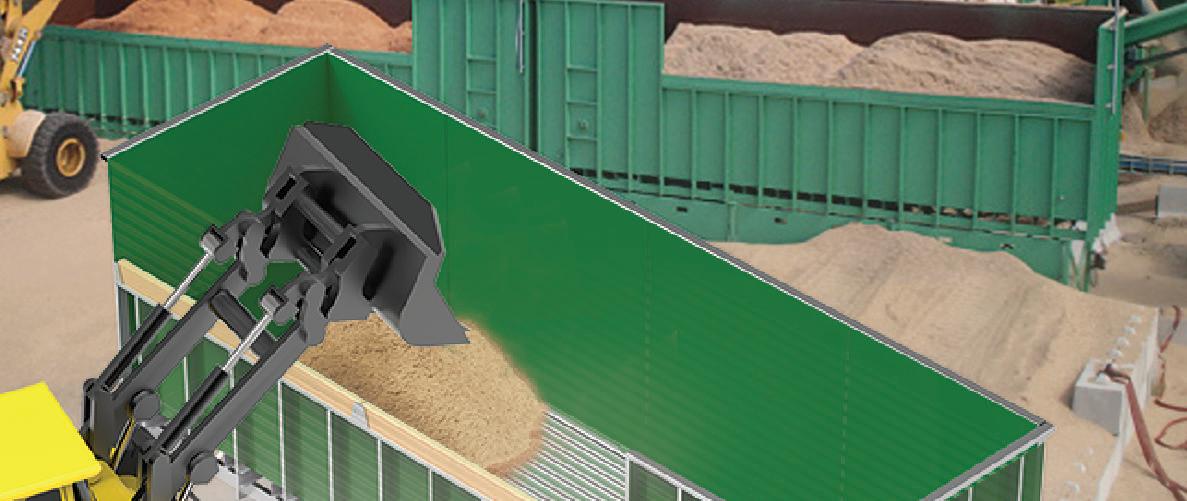
11 minute read
DOMESTIC
PHOTO: STOCK
STAYING THE COURSE
A milestone for achieving the historically elusive parity of biomass heat with other renewables, the BTU Act has finally passed. Now, industry stakeholders must strategize and collaborate to capitalize on momentum. BY ANNA SIMET
When the BTU Act was first introduced roughly a decade ago, its rightful passage seemed imminent. Solar, wind and other technologies had already been receiving a federal investment tax credit of 30% for several years per the Energy Policy Act of 2005, and modern wood heat had been inadvertently left out. Surely, an oversight that would be rectified, granting modern wood heat parity with other competing technologies.
That, however, was far from the case. Year after year since then, the BTU Act was brought before Congress, where it eventually died. While some grew wary and resolved to dismiss it as a pipe dream, those who staunchly believed in the bill’s purpose and potential continued to rally behind it. And, in December, they finally succeeded. “I think that credit is due to those of us who persisted in the face of industry skepticism and hopeful optimism only to be dashed at the last minute multiple times,” says Charlie Niebling, one of the bill’s advocates largely credited with its passage. “Lots of people just said to heck with it, but a lot of us didn’t, and the result is a credit worth many tens of millions of dollars to the residential wood heating industry.”
Niebling, partner at Natural Resource Solutions LLC and consultant to wood pellet manufacturer Lignetics, says there are a number of shortlist items that the industry should immediately focus on in order to maximize the tax credit’s potential. “First, the industry needs to promote the heck out of it to consumers,” he says. “We need to do everything through all means available up and down the value chain.”
Another priority is getting the tax credit extended. “We’re hoping that with this new focus on climate and energy policy, there will be an opportunity to revisit the period of authorization,” he says. “The original BTU Act always envisioned a minimum of five years
to really give the market an opportunity to respond to the policy price signal the credit represents, and grow. We have a similar expectation for consistent support over a meaningful period of time like solar, wind and other renewable energies have had for over a decade.”
Getting the credit extended would up it back to its original 30%. “They added this provision into Section 25D, which was the result of legislation in the budget omnibus bill two years ago,” he explains. “There were stepdown provisions. So it’s now at 26% for two years, then drops to 22% in the 2023 tax year. And then, unless Congress acts, it will go away after that.”
And, of course, getting the commercial component of the BTU Act wrapped in is another goal. It was excluded this time for a number of reasons, Niebling says, but seems more likely to pass once Congress and the government has recognized and accepted the benefit of the residential credit for modern wood heat appliances.
Finally, he adds, because it’s a new provision of the tax code, industry needs to ensure the guidance issued by the IRS is workable, accurate and helpful. John Ackerly, president of the Alliance for Green Heat, emphasizes the importance of properly interpreting and following the EPA’s efficiency criteria.
Informing Consumers
“Much of the guidance the IRS is expected to issue about wood heaters is noncontroversial and will likely be consistent with solar,” Ackerly says. “There is one distinct issue that has plagued this industry in the past: how is 75% efficient at the higher heating value (HHV) defined and how much leeway do manufacturers have to stretch the meaning?” Congress stipulated that it must be HHV, Ackerly says, but the final language did not say that the EPA list of certified heaters is the definitive way to determine efficiency, although that is almost certainly what the IRS will allow. There is no other consistent, reliable way for retailers and consumers to know which heaters are actually 75% efficient or higher,” he says. “Over the past seven years, there have been a number of bills and extensive correspondence about strengthening the definition of 75% efficiency and moving wood heaters from section 25(C) to 25(D). The only method that Congress has referred to is using the efficiencies on the EPA list of certified stoves. No other method has been suggested.”
Tim Portz, executive director of the Pellet Fuels Institute, points out that currently, there are 51 pellet appliances in the EPA wood heater database that are 75 percent efficient or greater. “But just below the 75 percent—the appliances that don’t qualify—there are 19 pellet stoves that are 70 to 74 percent efficient, but these are ones you cannot use the tax credit for,” he says, adding that good retailers will let their consumers know which appliances do and don’t qualify.
While big box stores often don’t have the expertise—an issue that could slightly hinder spread of the word about the tax credit in general—specialty hearth retailers like Martin Sales & Service in Butler, Pennsylvania, have that knowledge and will play a key role in educating consumers. “The challenge the tax credit leaves our industry is informing the end consumer,” reiterates Adam Martin, owner. “We all need to work together to spread the news, because we all benefit from more homeowners heating with wood pellets or wood heat in general.”
Martin views it as a tipping point in making a sale, and has already experienced an impact. Despite only being passed a couple of months ago, the tax credit has resulted in an uptick in pellet appliance sales. “I have had a few customers who seemed to be a bit hesitant about making a final decision to purchase a pellet stove or wood stove, but informing them about the 26% tax credit seemed to make that decision process much simpler because of the significant savings,” he says.
Another piece of the puzzle is the fuel going into these appliances—balancing production and inventory with market demand, when it comes to wood pellets.
Gauging Demand
As is likely the case with many pellet manufacturers, Portz says that upon passage of the BTU Act, he began thinking about what, exactly, the real impact will be. “Will we sell more pellet appliances than we otherwise would have, or will we incentivize those already wanting a pellet appliance to buy a more efficient model? We have to persuade the fuel agnostic people to choose pellet heating, and it matters what our retailers tell them. Does this create a situation in which—outside of being motived by the renewable aspect or feel of pellet heat—it’s viewed as a commodity purchase, a way to cost-effectively heat their home?
“Our members recognize that we have a good thing now, but another question is, when and how does it start to impact overall wood pellet demand? Looking at the data that we’ve
Domestic Wood Pellet Inventory Levels, 2016-2020
700,000 650,000 600,000 550,000 500,000 450,000 400,000 350,000 300,000 250,000 200,000 150,000 100,000 50,000 0
gleaned from the EIA, the reality is, we’re got a situation where most producers are making as many pellets as they can make,” Portz says.
That’s not to say they couldn’t sell more, Portz is quick to add. “They could sell more, but some can’t get any more fiber, and some are just tapped out in terms of capacity—they enough fiber, but don’t have another press to run,” he says. But producers know better than to make quick capacity investment decisions in reaction to seasonable surges. “Not only is it because it’s tough to hire and train someone and maybe fill a graveyard shift, but you don’t want to have to do all of that just to lay them off months later.”
Unfortunately, Portz points out, there is no way to track how many appliances are sold as a result on the BTU Act. “You can argue it certainly will result in more sales, but this situation exacerbates the lack of visibility producers currently have on appliance sales.”
The Hearth, Patio and Barbeque Association does track shipment data on the primary hearth fuels it represents, including pellet appliances, says Emily McGee, director of communications. That information is released in April of each year along with data on other primary hearth fuels, with a limited amount available for public disclosure, she says. According to that data, approximately 60,805 pellet stoves were shipped in 2019, a dip from 2018’s 72,105. While lower, that number only represents appliances shipped to retailers and does not include the number of actual appliances sold.
The uncertainty around that number, Portz points out, could eventually lead to some challenges. “I’m not sure how we’ll be able to determine the number sold as a result of the BTU Act, unless there is a way to obtain that data from the government,” he says. “Manufacturers know exactly how much fuel is being produced, how much inventory they have, how much they’re paying for inbound raw material, the average wholesale price, etcetera. But they don’t know anything about appliances—the best thing they can use is what they’re told by their retail suppliers.”
Historically low inventory has been indicative of a healthy wood pellet market, data that is tracked and released by the U.S. EIA’s Monthly Densified Biomass Fuel Report. In August 2016, there was 620,000 tons of inventory on the ground, Portz points out. “That’s a bad position for producers to be in—at $165 per ton, that’s a $102 million of shrink-wrapped pellets, just sitting there. In comparison, there was just under 195,000 tons in 2020.”
But while lean inventory means less money on the ground and more revenue, it is very much a balancing act—especially with a new catalyst for market growth. “In 2019, in the West, in October there were 45,000 tons of wood pellet inventory,” he says. In November, it dropped to 29,000. That means the rate of production needed to be subsidized by 15,000 tons in a month. December took another 12,000-ton bite out of inventory, and in January, we were at 10,000 tons.”
February finally saw a few thousand-ton bump. “If the weather plays out differently








and we go to zero—if a cold snap hits—with all the inventory in the retail category, we could have a situation where consumers in Washington and Oregon can’t get wood pellets,” Portz says. “We love the opportunity for new appliances to get sold, but as a sector, we have an obligation to ensure we have enough fuel available to satisfy all the demand.”
Portz says that doesn’t necessarily mean there is a capacity issue, but rather, it is perceived as a “shortage” by consumers if they visit several retailers and can’t buy fuel. Recognizing the glass-half-empty nature of this viewpoint, Portz is quick to add that he believes the market will sort it out. He is aware of several producers readying to or currently making investments in new capacity, and the continuing surge in the grilling pellet market is providing manufacturers some leeway to spend more money on fiber that, in prior years, they wouldn’t have thought twice about.
“Up until now, producers wouldn’t spend more than $30 per ton of fiber if the final product was heating fuel, because they need to find their margin,” he says. “Lots of feedstocks wouldn’t even be looked at because it just wouldn’t pencil out. Now, with what’s happened with the barbeque market, people are looking at all kinds of fiber.”
With all the above under consideration, cheap fossil heating fuel is one more weight to balance.
Fossil Fuels and Carbon Accounting
“It’s tough out there—we’ve been struggling in this era of cheap oil, gas and propane,” Niebling says. While that doesn’t look like it will change any time soon, what could make a difference is a renewed focus on an aggressively regulated carbon economy under the Biden administration. “But that cuts both ways—it really will depend on how biomass, pellets and chips, are viewed in whatever carbon accounting scheme becomes the basis for deciding which technologies are on the benefit side of regulating carbon and which aren’t,” he says. “And we know well that there are organizations and individuals who say that burning biomass at any scale, for any purpose, is bad for the climate, and will be pushing hard on that message.”
Niebling emphasizes that while the focus is on the practical benefit side of having a tax credit and incentivizing consumers, it’s also an important symbolic victory. “Modern, efficient use of wood as a heating fuel is now on par with solar and wind, where it ought to be,” he adds. “It has been overlooked, and we need to take stock in that. There is real value in being able to say that we’re recognized as being worthy of the support of the taxpayers. So, beyond the fact that you can knock $1,000 off a pellet stove, we have credibility and legitimacy in the eyes of government, and that’s important.”
Author: Anna Simet Editor, Pellet Mill Magazine asimet@bbiinternational.com 701-738-4961






